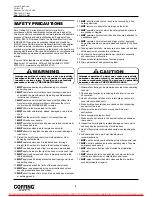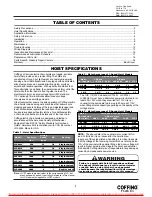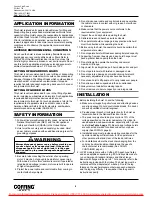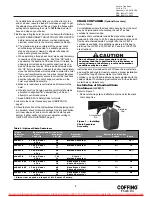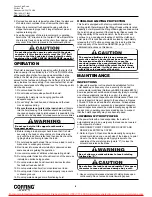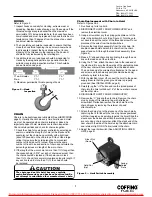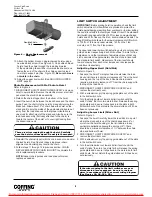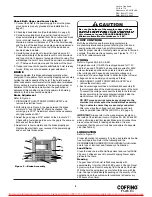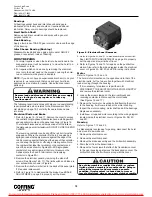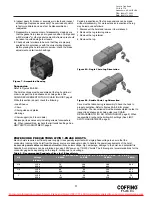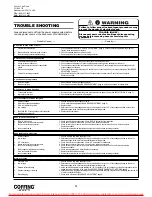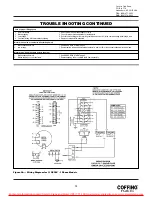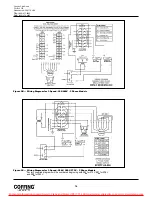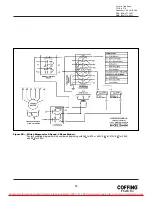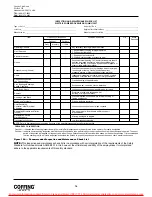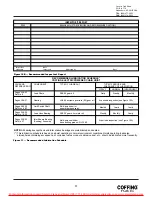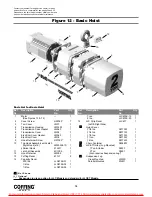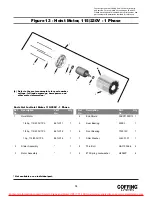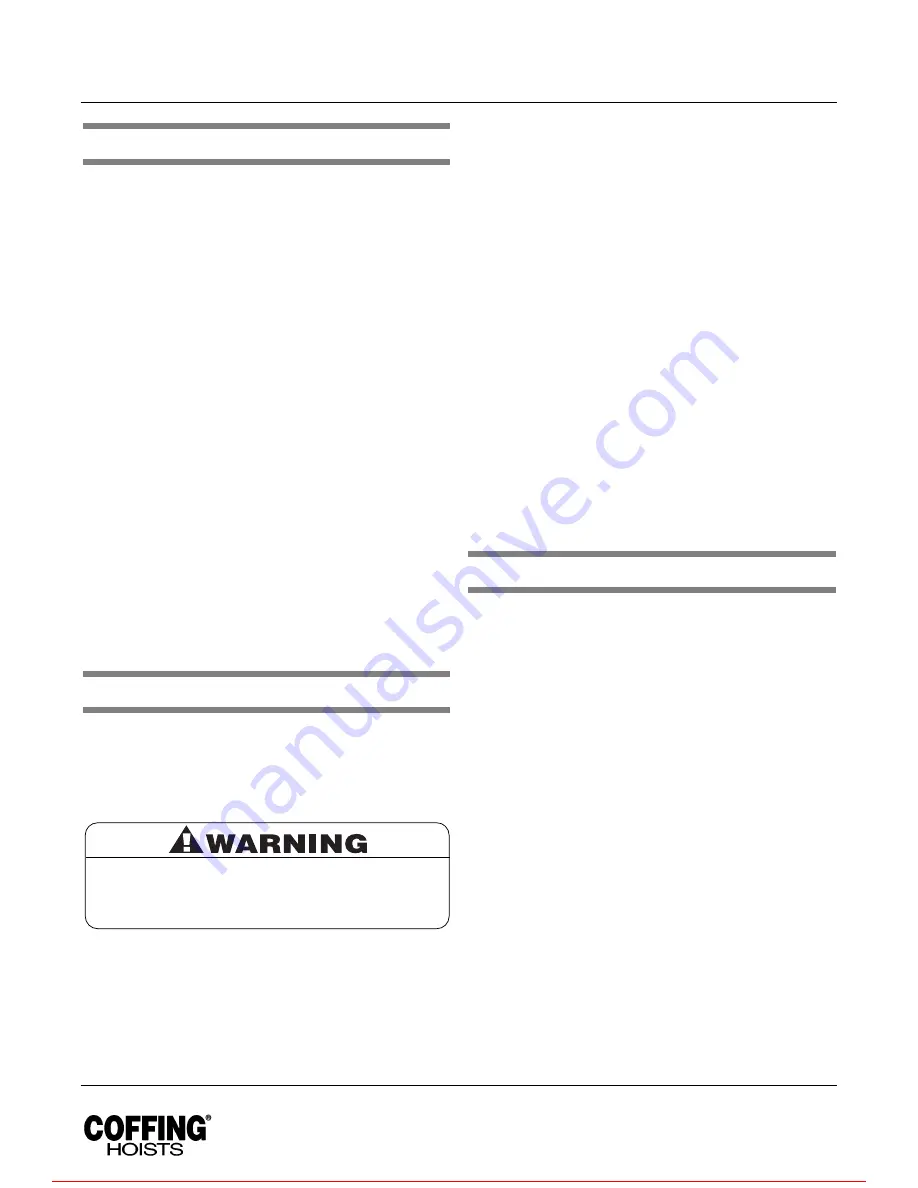
APPLICATION INFORMATION
This hoist is intended for general industrial use for lifting and
transporting freely suspended material loads within its rated
capacity. Coffing Hoists cannot be responsible for applications
other than those for which Coffing equipment is recommended.
Prior to installation and operation, we caution the user to
review his application for abnormal environmental or handling
conditions and to observe the applicable recommendations
as follows:
ADVERSE ENVIRONMENTAL CONDITIONS
Do not use the hoist in areas containing flammable vapors,
liquids, gases or any combustible dusts or fibers. Refer to
Article 500 of the National Electrical Code. Do not use this
hoist in highly corrosive, abrasive or wet environments. Do not
use this hoist in applications involving extended exposure to
ambient temperatures below -10°F or above 130°F.
LIFTING OF HAZARDOUS LOADS
This hoist is not recommended for use in lifting or transporting
hazardous loads or materials which could cause widespread
damage if dropped. The lifting of loads which could explode or
create chemical or radioactive contamination if dropped
requires fail-safe redundant supporting devices which are not
incorporated into this hoist.
LIFTING OF GUIDED LOADS
This hoist is not recommended for use in the lifting of guided
loads, including dumbwaiters and elevators. Such applications
require additional protective devices which are not
incorporated into this hoist. For such applications, refer to the
requirements of applicable state and local codes, and the
American National Safety Code for elevators, dumbwaiters,
escalators and moving walks (ASME A17.1).
SAFETY INFORMATION
1. Follow all local electrical and safety codes, as well as the
National Electrical Code (NEC) and the Occupational
Safety and Health Act (OSHA) in the United States.
2. Hoist must be securely and adequately grounded. Hoist
power cable is provided with an additional lead (green) for
grounding purposes.
3. Be careful when touching the exterior of an operating
motor; it may be hot enough to be painful or cause injury.
With modern motors this condition is normal if operated at
rated load and voltage (modern motors are built to operate
at higher temperatures).
4. Protect the power cable and control cable from coming in
contact with sharp objects.
5. Do not kink power cable and control cable and never allow
the cable to come in contact with oil, grease, hot surfaces,
or chemicals.
6. Make certain that the power source conforms to the
requirements of your equipment.
7. Inspect the unit daily before operating the hoist.
8. Cluttered areas and benches invite accidents.
9. The operator should not engage in any practice which will
divert his attention while operating the hoist.
10. Before using the hoist, the operator should be certain that
all personnel are clear.
11. Do not operate hoist with loads exceeding its rated capacity.
12. Supporting frames or beams used as a hoist hanger must
have a greater load capacity than the hoist.
13. Do not attempt to operate the hoist beyond normal
maximum lift range.
14. Align hoist for a straight line pull. Avoid side pull or end pull.
15. Do not operate hoist with twisted or damaged chain.
16. Do not operate a damaged or malfunctioning hoist until
necessary adjustments or repairs have been made.
17. Do not use hoist to lift people or to carry loads over people.
18. Do not leave a load suspended in the air unattended.
19. Always remove load before making repairs.
20. Do not remove or obscure capacity or warning decals.
INSTALLATION
1. Before installing the hoist, check the following:
a. Make sure all supporting structures and attaching devices
are strong enough to hold your intended loads. If in doubt,
consult a qualified structural engineer.
b. Provide proper branch circuit protection for the hoist as
recommended in the National Electrical Code.
c. The power supply should be plus or minus 10% of the
voltage specified on the motor nameplate. It is critical to
use adequate sized power cables, especially with 1-phase
hoists (See Table 5, page 11). Be sure dual voltage hoists
are connected or wired to correspond with your power
supply (See WIRING, page 9).
d. Installation area must provide operating conditions for the
operator including sufficient room for the operator and
other personnel to stand clear of the load at all times.
e. For installations where the slack chain hanging from the
unit may be objectionable or hazardous, the use of a
chain container is recommended (See CHAIN
CONTAINER, page 5).
2. JLCET models come with a Coffing ET-A push-type trolley
and an adaptable suspension lug. ET-A trolleys are made to
run on American Standard I-Beams and Wide Flange
Beams with flange widths up to 8". For assembly refer to the
instructions provided with the trolley. The hoist lug must be
centered with the sideplates (±1 washer). Due to the lug
thickness, the washer placement between each sideplate
and the lug may differ by 1 less washer than the generic
instructions specify.
4
Country Club Road
P.O. Box 779
Wadesboro, NC 28170 USA
TEL: (800) 477-5003
FAX: (800) 374-6853
Always disconnect power source before working on
or near a hoist or its connected load. If the power
disconnect point is out of sight, lock it in the open
position and tag to prevent unexpected application
of power.
For more information contact: Sievert Crane and Hoist, (708) 771-1600, [email protected], www.sievertcrane.com


